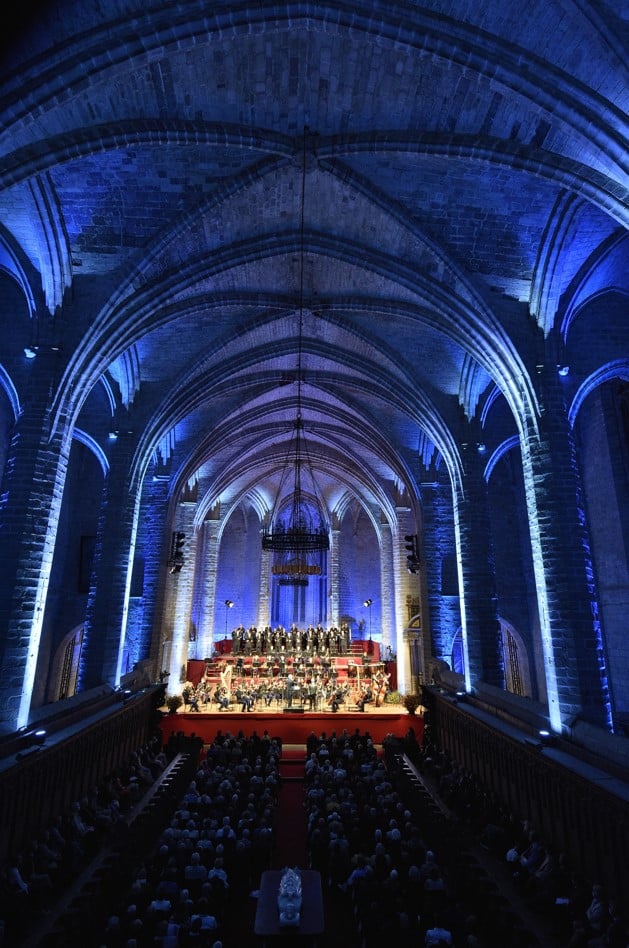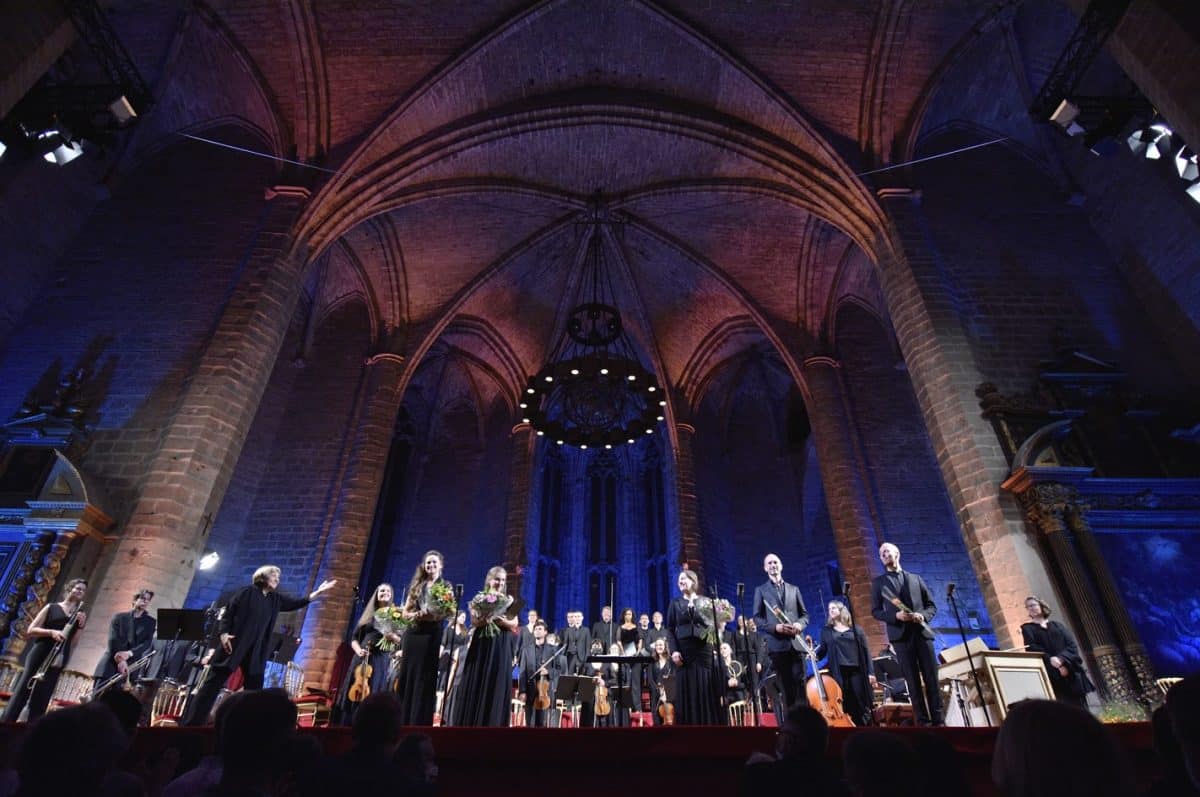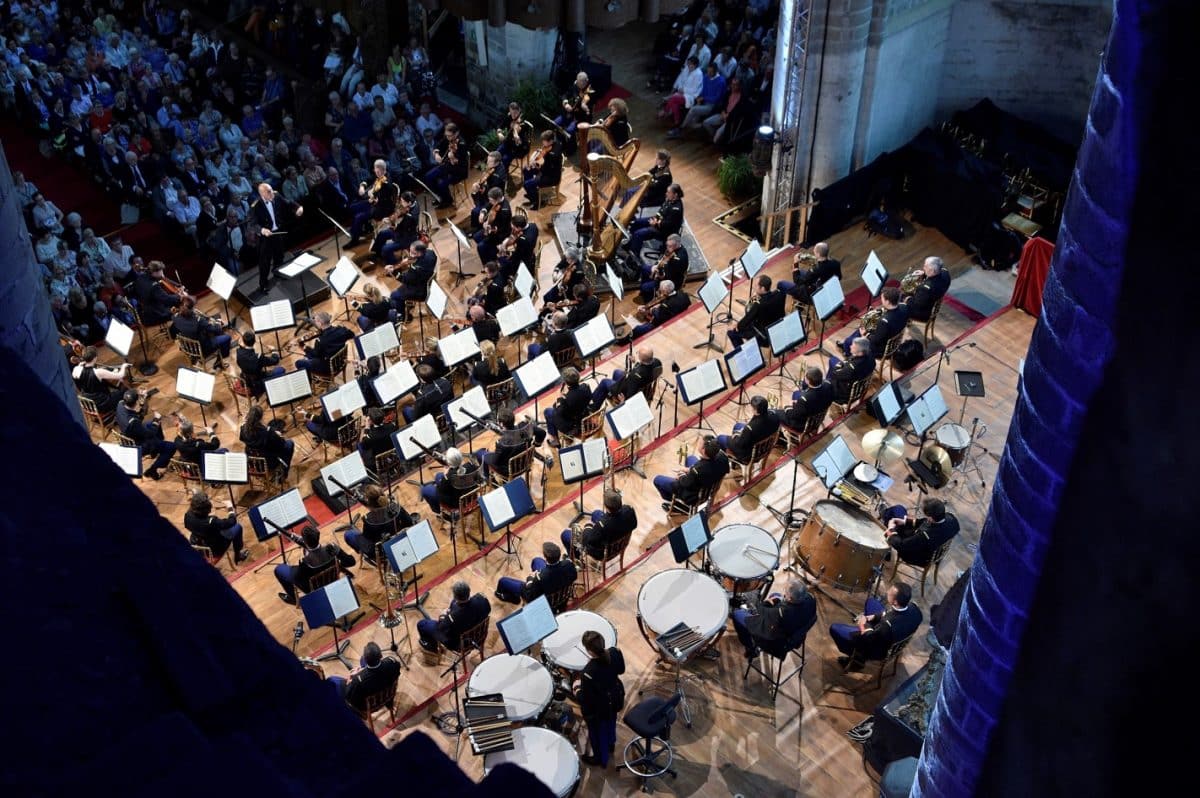If you have decided to explore the Livradois-Forez Regional Natural Park, the Chaise-Dieu is an essential stopover on your getaway. The village will surprise you with its scale despite its small size.
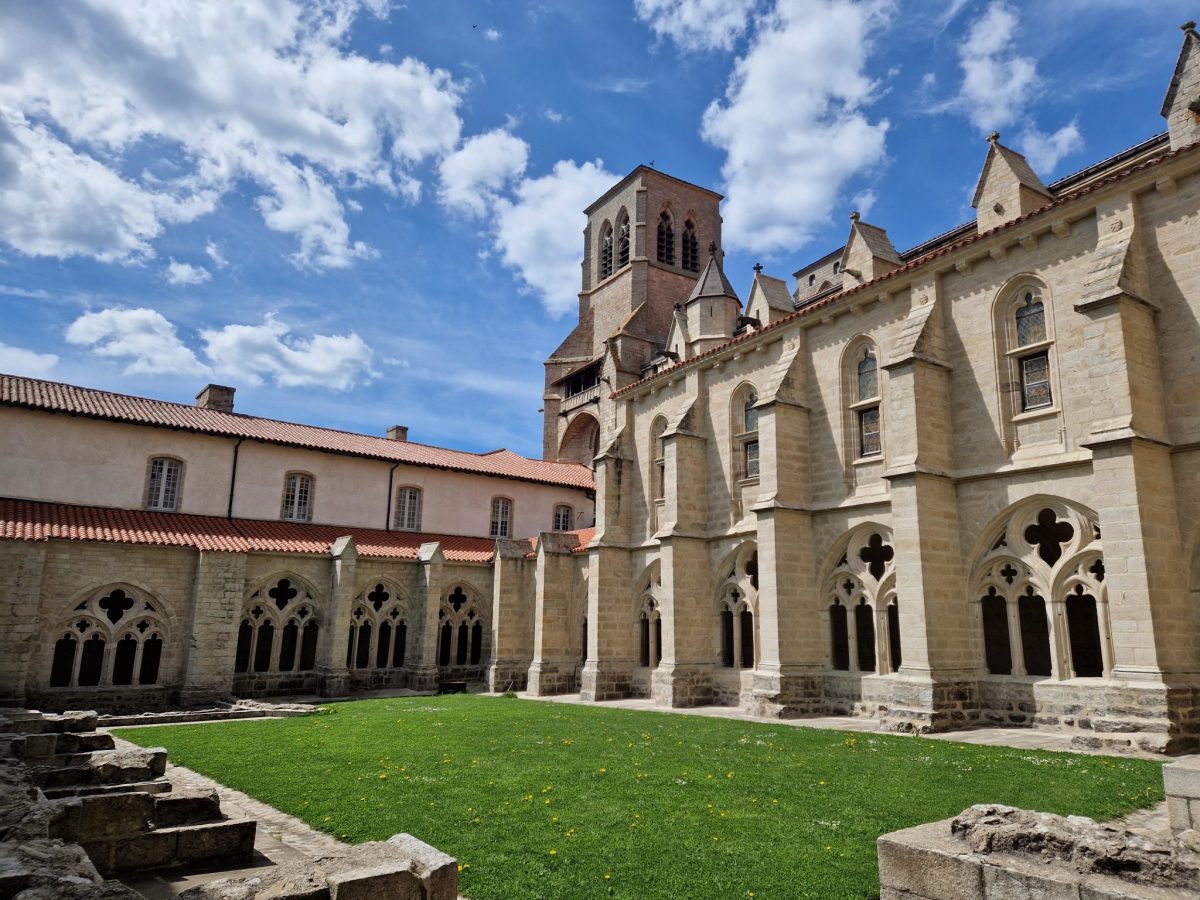
The Chaise-Dieu Abbey is a central element of this heritage. Moreover, the village owes its name to the abbey which was rebuilt on the ruins of the monastery of “Casa Dei”. The word “chair” comes from the Latin “Casa” and will become the Chaise Dieu over the centuries with the evolution of the French language.
As soon as you arrive, your feet will inevitably guide you towards the must-see Chaise-Dieu Abbey. Founded in the Middle Ages by the Saint of the same name and rebuilt in the 14th century by Clement VI, it marks the landscape with majesty. The village of La Chaise-Dieu, with its peaceful courtyards, squares and alleys lined with old houses, is an invitation to stroll which will delight lovers of the bucolic and authenticity.
Explore the Gothic treasure of Auvergne: the Abbey Church of Saint-Robert de la Chaise-Dieu
La Chaise-Dieu Abbey, with its imposing Gothic abbey ensemble, is a masterpiece of southern Gothic and a key site in European religious history. It embodies the cultural and architectural richness of the Middle Ages, as evidenced by the tomb of Pope Clement VI, the Danse Macabre, and the 144 carved oak stalls.
This place is so rich that for several years, the abbey has set up a discovery trail, offering visitors an immersion in 1000 years of history and architecture. This tour highlights emblematic spaces of the abbey, such as the Gothic cloister and the echo room, known for its surprising acoustics. New rooms have been opened, including the “Clement VI lodge”, housed in the old kitchens and equipped with an optical theater which tells the story of the construction of the abbey church by Pope Clement VI.
Let yourself be enchanted by the organs of the Saint-Robert Abbey Church
Once inside the abbey church, let yourself be amazed by the organs, witnesses to the musical and artistic history of the city. Composed of two distinct parts, the positive organ and the large buffet, they date from the 17th and 18th centuries respectively.
After being damaged during the French Revolution, these organs were restored, regaining their voice in 1976. A second restoration, completed in 1995, fully restored their former glory. Today, the organs illustrate the musical magnificence of Chaise-Dieu Abbey. They are not only used for the liturgy but are also a central element of the La Chaise-Dieu Festival, creating a deep link between music and historical heritage.
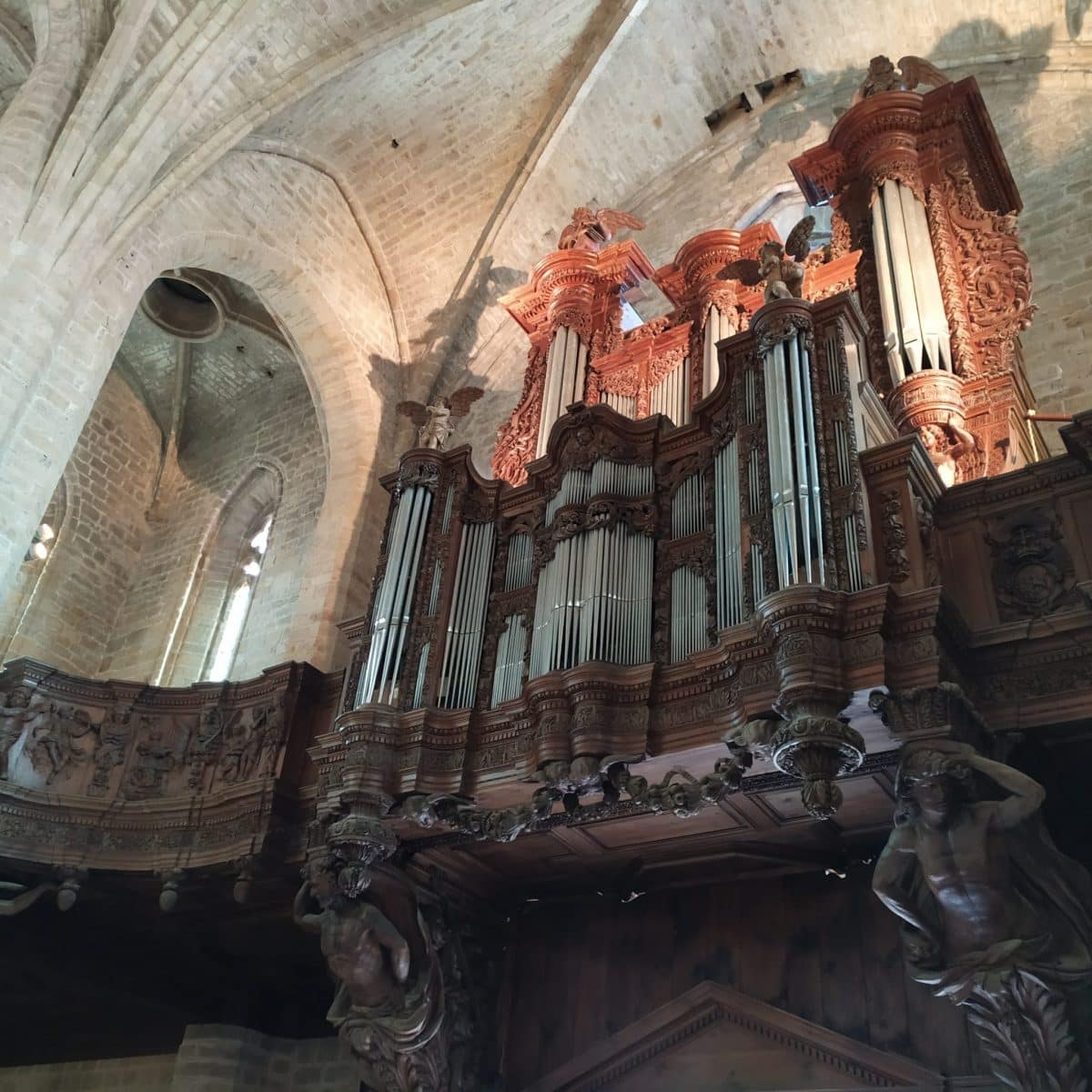
The fourteen Flemish tapestries from the Chaise-Dieu Abbey
You won't stop being surprised. The Chaise-Dieu abbey complex conceals another treasure. The precious Flemish tapestries from the 16th century are back after careful restoration.
These fourteen tapestries, commissioned by the Abbot of Saint-Nectaire, are remarkable examples of Flemish art. Made with wool, linen, silk and metallic threads, they illustrate the richness and complexity of this art.
These works, which tell stories from the Old and New Testaments, are now installed in the former Notre-Dame du Collège chapel, specially rehabilitated to accommodate and preserve them.
Come and discover the new exhibition space where architect Richard Goulois has created a place that respects both the historical heritage and contemporary conservation requirements.
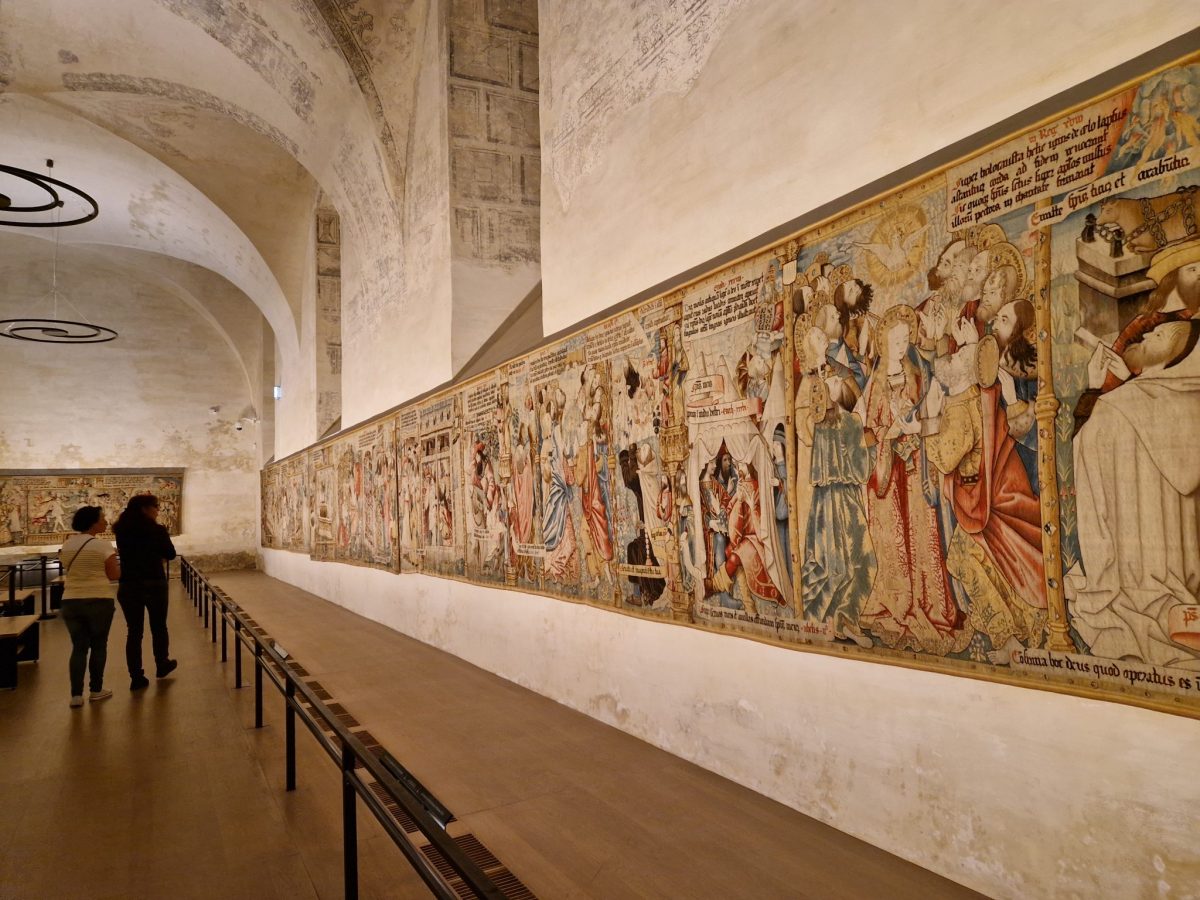
Vibrate to the rhythm of the La Chaise-Dieu Musical Festival
The La Chaise-Dieu Festival highlights the cultural importance of the abbey. It is an unmissable event on the international musical calendar, which transforms this village every summer into a center full of excitement for classical music enthusiasts.
For more than four decades, this festival has attracted artists and music lovers from around the world. The program ranges from great classics to lesser-known pieces, offering real musical diversity.
More than a hundred musicians like Renaud Capucon, Alexandre Kantorow, Alexandre Tharaud, or Daniele Rustioni come to perform there. National orchestras such as the Orchester National d’Île de France also choose the Festival de la Chaise-Dieu to offer musical performances and take advantage of the unique acoustics of the abbey church.
The festival is a celebration of sacred and classical music whether you are a music lover or simply curious. Don’t hesitate any longer, and mark this annual summer meeting in your diary now.
Stroll through the medieval city
Stopping off at Chaise-Dieu also means taking the time to get lost in its winding streets. This medieval city is built around the Chaise-Dieu Abbey. There we discover houses with old facades which today house talented artisans and cultural cafés, creating a harmonious blend of past and present.
Don’t miss La Casa d’Art. Since 2004, Casa d’art has brought together art professionals who open the doors of their workshops and boutiques to you all year round. These sculptors, potters, ceramists, luthiers and wood turners offer exhibitions and courses for adults and children.
The collective organizes an event of national importance every year: the Biennale des Métiers d’Art. In odd years, discover the crafts of wood, in even years, let yourself be seduced by those of ceramics.
Every Thursday, local gastronomy is in the spotlight at the market located on the main square. Let yourself be tempted by its artisans: butcher delicatessen caterer, fishmonger, baker, honey, fruits and vegetables, cheeses, plants and flowers, depending on the season...
And why not continue the experience with a stop “In the forest”. The opportunity to discover this rural and modern bookstore and its cellar-wine bar. You can come and choose a book from among 5000 books or simply sit down to sip tea, coffee, a glass of wine or a beer, depending on the time of day.
Explore the natural heritage around La Chaise-Dieu
La Chaise-Dieu is surrounded by an exceptional natural panorama. Look into the distance and contemplate the vast wooded areas and green meadows. They offer an idyllic setting for hiking and contemplation.
The Senouire River, winding and full of life, describes an almost complete loop from the west, the north then the east of the city. Rich in trout, home to colonies of otters, it takes its name from the Latin sinus aurei (golden curve) which popular tradition translated into golden serpent. After a journey of around fifty kilometers, it flows into the Allier at Vieille-Brioude, after touching the Lavaudieu abbey.
The Senouire river is the link between the different hiking trails which will allow you to discover the landscapes of the Casadean plateau: forests, pastures and crops; and the rich heritage: crosses, monks' stones, chapels and railway viaduct.
Ideas for getaways and tourist itineraries around Chaise-Dieu
You want to extend your stay, seduced by the charms of this village. The region around La Chaise-Dieu is dotted with tourist routes to satisfy your thirst for discovery.
Off the beaten track
During the visit of Charvols arboretum, you will discover trees brought from the four corners of the world. Nearly 100 species are spread over 3 hectares. Panels tell you anecdotes and scientific information about these different specimens.
The natural spaces around La Chaise-Dieu
Enjoy a walk on a path paved with legends: the Golden Serpent trail.
Take your book to the edge of Breuil pond laid out on the edge of a pine forest.
A former medieval fishery and today a regional nature reserve, you can learn about fly fishing on Malaguet Lake.
Want to discover even more of the richness of the Livradois-Forez Regional Natural Park, board the AGRIVAP tourist trains. 42 kilometers of viaducts, tunnels, streams and panoramas of Livradois with the railway line linking La Chaise-Dieu to Ambert
La Chaise-Dieu is undoubtedly a destination not to be missed, whether for its abbey, the magic of the music festival, or the diversity of its natural spaces. This well-preserved and restored village will surprise and seduce you. It’s time to embark on a new micro-adventure in the heart of the Livradois-Forez Regional Natural Park.


